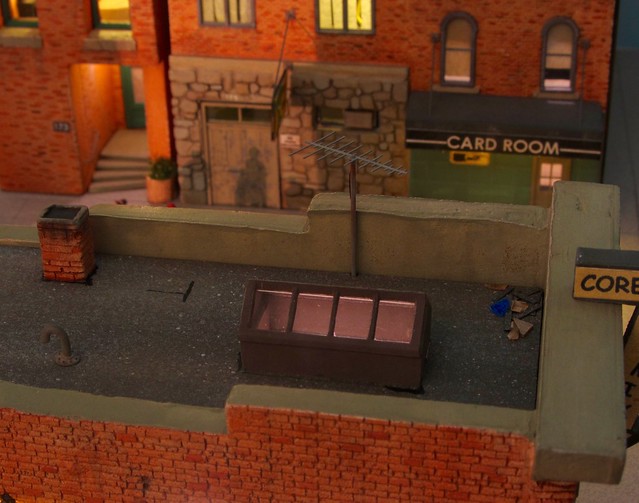HO-velo, beautiful roof tops.
I had to go look at some of my HO scale work in progress.
Looks like I have been using WS fine ballast dark gray #1375. (still looks to large to me, but it works).
When I am tired and do not want to spend alot of time swabbing/brushing a roof with glue, here is a quick way to tar and gravel a roof.
Of course the roof is painted black days, well sometimes years, before I do the gravel work.
Put Painters tape on anything you do not want to get wet with the spray.
Tuck the Painters tape in the corners and edges of the walls and roof.
Get your ballast ready in a shaker cansister and a plastic tub to catch the leftover gravel.
Spray the roof with a coat of clear gloss or clear flat and make it look wet then sprinkle the gravel on the wet coating and tilt the roof so the gravel slides around, side to side and back to front over the plastic tub.
Now tilt the building over the plastic tub and catch the loose leftover gravel.
Here is an extra step if wanted, respray the gravel with a coat of flat clear and let it dry good. Now remove the Painters tape. This top coating will seal the tiny grooves around the stones. Now in two years when you see fuzzy stuff growing on the roof, you can vacuume the roof and not lift off the gravel.
If you get gravel stuck where you do not want it because you coated something you could not cover (like on top of and around the ‘‘metal’’ parts of the roof vent, just lightly scrap it with a small flat screwdriver when dry. I use Dental picks. Or just hire workers to do the scrapping.

WS Fine Gray ballest.

That’s funny, same building and gravel, just different lighting. One looks brown and one looks gray.










